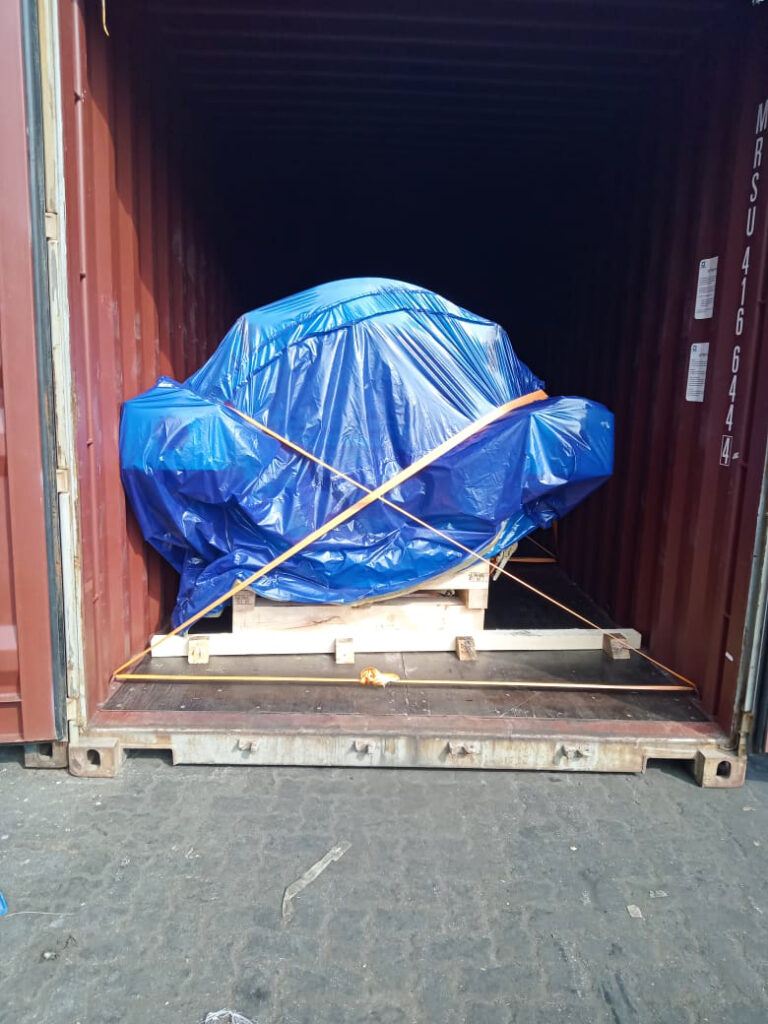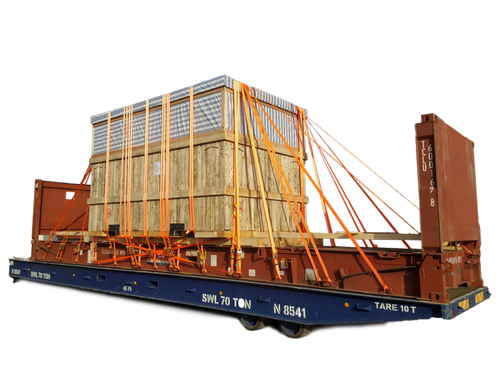About Lashing Services & Benefits

Lashing products allow you to stabilize and keep safe your cargo during transport, avoiding slips, swings, or sudden movements.
Lashing is the necessary action of fastening and stabilizing all types of packages, boxes, pallets, machines, and loads to immobilize them firmly using the necessary and suitable materials, elements, or products. In general, it is trying to keep safe all kinds of merchandise transported with maritime, land, or air means, to prevent and avoid possible damages due to blows, chafing, displacements, sudden movements, rocking or overturning of its contents.
Cargo is loaded onto a ship when she is floating steadily in the water, upright, or with a practical trim astern. When the ship sails out to sea, it encounters external forces which result in six forms of motions acting on the ship. These motions are a threat, especially for those ships which require cargo lashing and securing it on the open deck
If the storage of cargo is not secure enough then there is no escape from the behavior of the seas and the wind once they show their rage. This result takes a toll on the loaded cargo, causing damage to other cargo in the vicinity of the vessel’s structures and fittings and even throwing the cargo overboard. Improper cargo lashing and failure to adhere to the procedures required for cargo stowage on ships are dangerous to property, life, and the environment at sea.
As a rule, most of the loading or cargo operations in any means of transport must be linked to the lashing operations, except when the characteristic of the cargo or the means of transport facilitates a total occupation of the space and does not allow free spaces. Therefore, the need for lashing operations is a logical complement to the loading and cargo operations.
To avoid getting into situations like these the responsible personnel on board should be competent enough to always plan and uphold the safe carriage of the cargo. This is done by proper planning of container lashing and securing.
In Alpha Packaging we offer different products and regulated packaging that can ensure a good stowage and lashing of your loads such as airbags dunnage bags, isotherm insulation, non-slip products, etc.

Points to remember while securing cargo
1. A good tight stowage of cargo containers on ships may avoid the need to secure it, provided the cargo is adequately packaged and there are no heavy components
2. Bulky and heavy units may still be required to be secured even if the space around them is filled with other cargo. Particular attention should be paid to the chances of such units sliding or tripping
3. A few units can be secured or lashed together into one block
4. Permanent securing points on the cargo should be used, but it must be remembered that these securing points are intended for inland transport and may not necessarily be suitable for securing other items onboard ships
5. Independent lashings must only be secured properly to suitable strong points of the ship’s fittings and structure, preferably onto the designated lashing points
6. Cargo lashings must be taught and as short as possible for a better hold
7. If possible, the multiple lashings to one item of cargo should be kept under equal tension. The integration of different material components having different strengths and elasticity should be completely avoided
8. Cargo lashings must be able of being checked and tightened when on a passage
9. Lashings should be enough to prevent the loads from moving when the ship rolls through 30 degrees with a 13-second duration
10. Tightening the cargo down to the ship will add to a great deal in securing it completely before it shifts
Commonly used Cargo Securing Arrangements for Dry Cargo
1. Lashing is a general term that is used to on behalf of all the securing arrangements onboard: It includes ropes, wires, webbings, bandings, strapping or chains, bottle screws, and other patent tensioning devices mostly used on container ships
2. Tomming: Construction of a support of square section softwood framework, which chocks off the cargo against ship’s structure or other cargo
3. Filling: Use of airbags, empty pallets, old tires, etc. to fill the voids and broken stowage between items of cargo and between cargo and ship’s structures
4. Anti-skid: Flat boards are used to increase the frictional capabilities of the cargoes
5. Binding: Even out a stow with dunnage to make several units into one block. Also stowing bags or cartons in different directions in each layer forms a self-locking slab which is a tight stow for shifting cargoes
6. Structural Modifications: Very heavy and uncomfortably shaped cargo may be secured by welding the unit directly to the ship’s structure or by fabricating a steel framework or other support or chock which is permanently attached to the ship’s structure.

Basics of Safe Slinging
1. When loads are lifted on a sling the general idea is to get the load to be as secured in the air as it was on the ground
2. The loads must be satisfactorily secured by the slings
(a) Loads are completely contained by the slings (e.g. Bags in nets)
(b) Use fixed lifting pendants or lugs if available
(c) Ropes or wire slings must be completely wrapped around the loads – no loads should be left resting in loose bights of the line
(d) When using specialized components, they must be properly attached to the cargo, and the manufacturer’s instructions should be followed
3. The slings must be sufficiently attached to the lifting appliances
4. The loads must be slung so that they will not collapse or change form when they are lifted
5. The load must not damage the sling, possibly causing the slings to part. Use stuffing or padding at susceptible points or sharp edges
6. Ensure that the loads are not to be damaged by the sling
7. All lifting parts should have their pivoting points as near to the vertical as possible for a clean lift by the crane
There is a lot to the safety of container ships when it comes to lashing. Do you know any other important points that must be considered while lashing cargo on ships?
